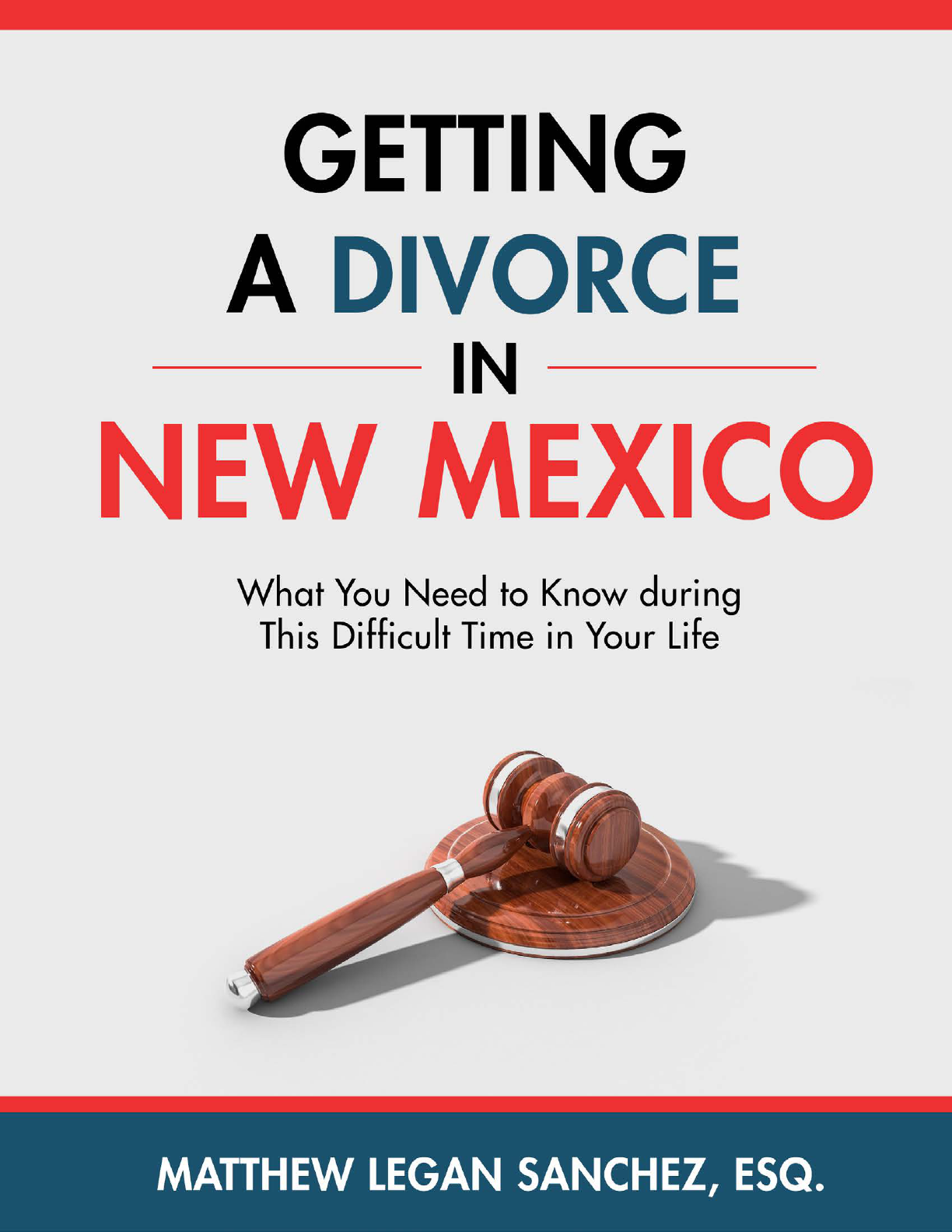

Page 2
CONTENTS
Opening Statement ................................................................................................................ 3
Chapter 1: The Divorce Process .......................................................................................... 5
Chapter 2: How Long Does a Divorce Take? .................................................................. 7
Chapter 3: Marital Settlement Agreements ................................................................... 9
Chapter 4: What Happens to Marital Homes After Divorce? ..................................16
Chapter 5: Alimony ...............................................................................................................20
Chapter 6: Alimony Guideline Worksheet ....................................................................23
Chapter 7: Parenting Plans .................................................................................................25
Chapter 8: Child Support .................................................................................................... 30
Chapter 9: Claiming Children as Dependents for Taxes ..........................................37
Chapter 10: Requesting Temporary Orders .................................................................39
Chapter 11: Settlement Facilitation ................................................................................45
Chapter 12: Let’s Take This Case to Trial? .......................................................................48
Chapter 13: Ten Horrible Divorce Decisions ................................................................52
Closing Statement.................................................................................................................62
About the Author ..................................................................................................................65

Page 3
OPENING
STATEMENT
My parents divorced when I was in the third
grade. I was thunderstruck.
Divorce strikes like an earthquake and shakes one’s life to its foundation. My
memories of that year are not viewed through rose colored lenses and painted
with hearts and butteries.
As an attorney, I observe many of the emotions that I experienced as a young
child while answering legal questions and handling all aspects of the legal process
necessary to complete a divorce.
People have an inborn tendency to fear the
unknown. To individuals that have never
experienced a divorce, the process can seem like
blindly walking through a dark and unfamiliar
place without a map or ashlight. In these
situations, friends and family with the best of
intentions often provide bad directions. This
misguided advice can amplify the stress and
confusion one experiences during a time when
one is already lost and emotionally exhausted.
Often a person facing a divorce hears fuzzy
and wildly dierent stories on what to expect.
Some of these stories might come from
individuals that faced divorce in a state other
than New Mexico and the stories are told like
a nightmarish ghost story. Other stories may
involve marriages with completely dierent
facts and circumstances — yet the story is told
“Divorce strikes like
an earthquake and
shakes one’s life to
its foundation. My
memories of that
year are not viewed
through rose colored
lenses and painted
with hearts and
butteries.”

Page 4
with a tone suggesting that one size ts all divorces. As a result, one is left reeling
from the hodgepodge of misinformation.
The books that I’ve read about the divorce process are overpriced. These books
are also written by individuals that likely have never visited New Mexico —nor
stepped foot in a courtroom for that matter. Because of this fact, many books that
I’ve read about divorce attempt to jam a square peg into a round hole.
This eBook provides the rst easily accessible and holistic guide to the common
legal issues encountered on the road to divorce in New Mexico. This eBook is
written from the eye and hand of an experienced attorney that has exclusively
practiced law in New Mexico.
“
Often a person facing a
divorce hears fuzzy and
wildly different stories
on what to expect.

Page 5
CHAPTER 1:
THE DIVORCE
PROCESS
All divorces are not created equally. Each divorce
varies in the degree of its diculty depending on the
issues and factors presented by the unique marriage. On one end of the spectrum,
there are short marriages without children, community debt, or community
property, where the parties can agree on all of the limited issues necessary to
complete the divorce. On the other end of the spectrum, there are highly contested
divorces where the parties are unable to reach an agreement on a wide range of
potential issues.
These wide and varying issues can include issues relating to the children such
as custody, timesharing, child support, tax exemptions, or relocating to another
state with a child. Potential nancial issues can include community debt/property,
interim support, alimony (spousal support),
taxes, retirement accounts (401k, IRA), and so
on.
For all levels of divorce, New Mexico has a
jurisdictional requirement that demands one
or both parties to live in New Mexico for six
months before the court will exert personal
jurisdiction over the couple. Additionally, the
divorce case must be led in a civil court that
handles domestic matters.
New Mexico is a “No Fault State” which
means that either person in the marriage
can request a divorce for essentially any reason, and one is not required to prove
or state abandonment, abuse, or adultery as a basis for requesting a divorce.
Did you know New
Mexico does not allow
for annulments?
Divorce is the only
path to end a valid
marriage.

Page 6
Typically the person seeking the divorce (i.e “Petitioner”) moves forward claiming
“incompatibility” or “irreconcilable dierences.”
In contested divorces, the process begins when the Petitioner les a Petition
and Summons with the Court, and then properly serves the other party (i.e.
“Respondent”) with a copy of the Petition and Summons. The Summons essentially
puts the Respondent on notice that a case has been led and that a response must
be led within thirty days. Note that neither the Petitioner, nor the Petitioner’s
attorney can serve the Respondent with these initial documents.
In New Mexico, once the Petition is led the court may enter a Temporary Domestic
Order (“TDO”) that basically places a freeze on all activity.
The TDO is served along with the Petition
and Summons and provides important
protections for the parties and their children
— if any — while the divorce is pending.
The TDO prevents one person from cleaning
money out of bank accounts, changing locks
on the family residence, changing account
information, removing the other party from
any joint accounts, and sets restrictions on
the general behavior of the parties to the
divorce, as well as the children. In other
words, TDO’s freeze the “status quo.”
New Mexico courts take violations of court
orders seriously. All court orders should
be treated like they were forged into stone on the top of Mount Sinai. Violating
the terms of a TDO can result in a sliding scale of sanctions. Best case scenario,
the judge will lecture the person responsible for violating the TDO. Worst case
scenario, the judge will hold the responsible party in contempt of court and order
the individual to pay any costs associated with brining the violation before the
court’s attention. In both scenarios the violation can create a bad rst impression
with a judge that ultimately decides how one’s future unfolds.
“New Mexico courts
take violations of
court orders seriously.
All court orders should
be treated like they
were forged into stone
on the top of Mount
Sinai. “

Page 7
CHAPTER 2:
HOW LONG DOES A
DIVORCE TAKE?
At this point the divorce case has been led and the other party has been properly
served with the necessary papers. Now comes the age old question, “How long
will it take to complete my divorce?”
Let me answer this typical question with an annoying, yet typical lawyer answer:
“It all depends.”
The elements needed to nalize one’s divorce can be completed in a single day,
or they can take several years. Whether the divorce process will take one day
or one year all depends on the number of
issues involved within the individual divorce.
Just as two snow akes are never alike, two
marriages are never the same.
As discussed in the following sections, all
nancial issues are handled within the
Marital Settlement Agreement. For marriages
with children, all of the issues relating to the
children must be agreed upon and then
reduced into a document called a Parenting
Plan.
On the lighter side of the spectrum, there are divorces where the parties agree
on all of the elements necessary to complete the Marital Settlement Agreement,
and Parenting Plan, if children are involved. The quicker the parties can come to
an agreement, the quicker that the necessary paperwork can be signed before a
notary and then led with the court.
On the more complex end of the spectrum, there are divorces with many issues
and little agreements. In relation to the necessary Marital Settlement Agreement,
Did you know a legal
separation often
involves the same
amount of time,
stress, and expense as
a divorce?

Page 8
these issues often surround disputes over martial debts such as credit cards,
medical debts, student loans, upside down mortgages, etc.
Other issues include dividing community property such as vehicles, home equity,
deciding who keeps the house, household furnishings, businesses, retirement
accounts, distinguishing marital and separate property, and the most feared word
in divorce: Alimony.
Often issues surrounding dollars and cents
are easier to solve than issues involving
children and the heart strings that they pull.
In this vein, the divorce process can also be
greatly prolonged by disagreements on
issues within the Parenting Plan. These issues
include reaching an agreement on custody,
timesharing, and the second most feared
phrase in divorce — Child Support.
When the former couple is unable to reach an agreement on any of the issues
discussed above, the court generally will refer the parties to a settlement
facilitation. During this settlement facilitation, the parties and their respective
attorneys — if attorneys are involved — will sit down with a neutral, third party
facilitator in an attempt to reach an agreement on any of the contested issues. In
most situations the remaining issues can be resolved during settlement facilitation.
As mentioned later in the book, although at times it is unavoidable, there are
a number of potential drawbacks with brining a case to trial and putting one’s
future into a judge’s hands. For this reason, settlement facilitation is generally the
end of the road for most divorces.
Assuming that both sides can reach an agreement during settlement facilitation,
the facilitator will reduce the agreement into writing, which can then be used
as the content for the Marital Settlement Agreement, Parenting Plan, and Final
Decree of Dissolution of Marriage.
Highly contested
divorces generally can
be settled outside of
court with a skilled
facilitator.

Page 9
CHAPTER 3:
MARITAL SETTLEMENT
AGREEMENTS
Every divorce that passes through a New Mexico courthouse must contain a
Marital Settlement Agreement (MSA) before the judge will sign the Final Decree
of Dissolution of Marriage. MSA’s are basically contracts that determine how
property and debts that were accumulated before and during the marriage will
be distributed between the parties upon divorce. A detailed MSA is an essential
aspect of each divorce because it clearly outlines who retains the specic property/
debts, and prevents downstream issues from oating to the surface.
A detailed and eective MSA covers every asset that was accumulated before
and during the marriage. These assets
include: Bank Accounts, Retirement/401K/
Pension Accounts, Homes, Land, Household
Furnishings, Vehicles, and any other
conceivable asset that one owns that
was either acquired before or during the
marriage. A detailed and eective MSA also
covers every debt that was accumulated
before and during the marriage. These debts
include: Credit Cards, Medical Debts, Home Equity Loans, Student Loans, and any
other debt acquired either before or during the marriage.
Often I see rushed and “fuzzy” MSA’s that were completed pro se (without an
attorney), where the parties fail to list many of the relevant assets and debts, or fail
to state how and when the assets and debts will be transferred into one person’s
exclusive name. Another common mistake that I see are MSA’s that fail to provide
a deadline for removing the other person’s name from joint accounts, debts, or
Checking little boxes
on a pro se MSA, can
aect the rest of your
life.

Page 10
property. Removing one’s name from any asset or debt is crucial to ensure one’s
credit is not damaged in the event that the other party defaults on payment.
New Mexico is a community property state. Generally speaking, this means that
any assets and debts that are accumulated during the course of the marriage
— other than gifts, inheritances, bequests, or pain and suering awards — are
considered “community” and will be split 50-50 upon divorce. On the other hand,
generally speaking, all of the assets and debts that were accumulated before the
marriage are considered “separate.”
As you can see, the distinction between separate and community property
is pretty cut and dry. Here comes the curve ball — in certain situations one’s
separate property can be transformed (transmuted) into community property.
This situation generally arises when assets or money that were previously separate
property are thrown into the marital stew and then stirred by a legal process called
commingling.
Let’s take a look at the most common ways that separate property transforms into
community property through commingling.
SEPARATE & COMMUNITY BANK ACCOUNTS
The process of separate property becoming community property often begins
with separate funds being placed into a joint bank account.
Placing separate funds into a joint banking account does not transform the
separate property into community property unless there is also a nding of intent
to do so.
Moreover, simply opening a joint account, by itself, does not establish a gift or
trust of separate monies. However, separate funds can be transformed into
community funds when the funds are mixed in a joint account to such a degree
that it is impossible to later distinguish the separate and community funds.
COMMINGLING (“MIXING”) BANK ACCOUNTS
In some instances separate funds can transform into community funds through the
process of commingling. Commingling is another word for mixing and takes place
when separate funds are mixed into a joint account and become so intermingled
with community funds that they cannot be traced or identied. According to
New Mexico law, the commingling of separate funds with community funds

Page 11
can demonstrate that the owner of the separate
funds intended to make a gift of those funds to the
community. See Nichols, 98 N.M. 322
Let’s examine a few New Mexico cases to better
understand how separate funds can become
community funds through commingling.
In Wiggins v. Rush, Husband and Wife held joint bank
accounts during their marriage. All of the couple’s
money — both separate and community was
deposited into a joint account making it impossible
for the Court to distinguish separate from community
money. The New Mexico Supreme Court stated that: “Nothing appears in the record
to indicate that the separate funds of either Mr. or Mrs. Wiggins were traceable in
their joint account. The eect of this commingling [mixing of funds] was that any
separate funds deposited in the joint account were transmuted [transformed into
community funds].”
In another case, Nichols v. Nichols, Husband sold his sole and separate home and
deposited his separate funds into the couple’s joint account with Wife having
unlimited rights of withdrawal. The couple then used a portion of this money to
purchase a new home. The couple also used a portion of the money from time
to time to pay for living expenses — with Wife writing checks for a majority of
the purchases. The couple subsequently separated. Husband argued that the
funds were traceable and therefore remained separate property. Wife countered
that Husband’s separate funds were transformed into community funds through
commingling.
The Court ultimately sided with Wife, ruling that Husband’s separate funds were
transformed into community funds. The court reasoned that based on the facts
above, Husband intended to make a gift to the community by commingling his
separate funds with community funds.
SEPARATE & COMMUNITY HOMES
A common question that I hear involves homes that were purchased before
marriage, and whether the other party has any claim to the home upon divorce.
Homes that are purchased before marriage, or during marriage with separate

Page 12
funds, are considered separate property. Nevertheless, when community labor
or community funds enhance the value of the separate property, a portion of the
enhanced value becomes community property that is subject to distribution.
Although the community is entitled to a portion of the enhanced value, it is also
the community’s burden to prove that community labor/funds increased the
value of the separate property (such as principle payments, remodeling, etc.) It
is not enough to demonstrate that community money paid for “living expenses”
such as mortgage interest, property taxes, insurance, or any other fees that did
not generate a measurable increase in the home’s value. As such, one must prove
that community labor led to a measurable increase in the home’s value.
As stated above, the value of the separate property must be measurably increased
due to community funds or labor. In Dorbin v. Dorbin, the New Mexico Supreme
Court established a four-step formula to determine how much of the home’s
enhanced value is considered community property.
1. Take the value of the home at the date of marriage [Fair Market Value
of home].
2. That pre-marriage value is then added with the home’s rate of return
(i.e. the prot on the investment over a period of time). The total of the

Page 13
fair market value at the time of marriage [+] the rate of return during the
marriage is considered separate property.
3. The fair market value of the asset is determined from the date of divorce.
4. The community interest in the home [=] the fair market value of the
home at the time of divorce [–] the value of the home at the date of
marriage [+] rate of return of the home during the marriage.
To put the factors described above into context, let’s examine a New Mexico case
where the court ruled that the community was not entitled to a portion of the
home purchased during the marriage with separate money.
In Martinez v. Block, Wife inherited a sum of money during her marriage [separate
funds]. Wife used a portion of her inheritance to purchase a house for $85,000.
The home was purchased exclusively from Wife’s inheritance [sole and separate
funds]. Wife then used $93,486 of her separate funds to extensively renovated
and improve the property. Husband and Wife divorced. The parties agreed that
the value of the home at the time of the divorce was equal to the purchase price
[$85,000] + renovations [$93,486] = $178,486.
Husband argued that the community was
entitled to a portion of the enhanced value
of the home, because his labor increased the
value of the home. Wife countered that the
community is only entitled to a portion of the
enhanced value when the community can
prove that community funds or community
labor actually enhanced the value of the
property.
The New Mexico Court ultimately ruled in
Wife’s favor because Husband failed to prove that his labor increased the home’s
value. The court reasoned that the community is only entitled to a portion of the
enhanced value of separate property when the increased value can be traced to
community funds and labor. Because Husband and Wife agreed that the value of
the property was equal to Wife’s separate funds that were used to purchase and
then renovate the home, Husband’s labor did not actually enhance the home’s
Deeding a separate
home to one’s current
spouse can blur
the lines between
community and
separate property.

Page 14
value. Based on this fact, the community was not entitled to any interest in the
home.
The court stated that community labor devoted to a residence is comparable
to community funds that are used to pay interest, taxes, insurance, or any other
expense associated with maintaining an asset (i.e “living expense”). Additionally,
husbands and wives have a mutual duty to support one another, including the
use of separate funds/labor when necessary or appropriate. In the end, because
a measurable asset or measurable increase in value was not acquired through
Husband’s labor, the community was not entitled to a share in the increased value
of Wife’s separate property.
SEPARATE & COMMUNITY BUSINESS
The community is also entitled to a lien against a spouse’s separate business
when community funds or labor enhances the business’ value. In this respect, the
labor of both parties belongs to the community rather than to the individuals, but
community labor alone does not result in a community interest in the business.
Instead, the community labor must lead to a measurable increase in the value of
the business.
In Mitchell v. Mitchell, a New Mexico court examined the enhanced value of a
business through community funds/labor. In Mitchell, Husband argued that his
business as a CPA was his sole and separate property because his practice was
opened before the marriage. The court ruled that the enhanced value of the

Page 15
business — the value of the business from the time of marriage to the time of
divorce — could be traced to a measurable amount of community labor.
The court supported its ruling by reasoning that at the time of the marriage,
Husband’s CPA practice showed the annual income of about $600 and included
a couch, calculator, and small oce equipment. At the time of the couple’s
divorce, Husband’s CPA practice reported gross receipts of $153,968. Because of
these facts, the court ruled that the value of Husband’s business was due almost
entirely to Husband’s labor during the marriage (i.e. community labor). Therefore,
the increase in value was likewise community property. The court went one step
further and ruled that the company had also gained a measurable amount of
goodwill that was also community property.
SEPARATE & COMMUNITY MONEY SPENT
ON LIVING EXPENSES
The New Mexico Supreme Court has also held that one’s separate money that is
spent towards the community for food, clothing, entertainment, travel, etc. — but
where no tangible and measurable asset is acquired — will not be reimbursed. In
other words, any community/separate funds
that are spent during the marriage must be
traced to a specic and measurable asset.
In many situations a husband or wife acquires
separate money during the marriage, by
inheritance, gift, personal injury settlement,
etc. The money is then used for vacations,
paying o debt, or any number of everyday
living expenses. In these situations the
separate money that was used during the
marriage is lost and cannot be recovered in
divorce.
The New Mexico Supreme Court believes that community/separate money that is
spent on living expenses is not reimbursed because husbands and wives have a
mutual duty to support one another — including the use of separate funds where
necessary or appropriate to support the community.
“In other words, any
community/separate
funds that are spent
during the marriage
must be traced
to a specic and
measurable asset.”

Page 16
CHAPTER 4:
WHAT HAPPENS TO
MARITAL HOMES AFTER
DIVORCE?
For many Americans, owning a home is the embodiment of the “American Dream.”
Unfortunately, this dream can quickly turn into a nightmare when divorce looms
on the horizon and the couple is forced to decide what will happen to their little
slice of the American Pie.
One of the most contentious aspects of divorce surrounds the marital residence.
In many instances the marital residence is the couples’ most valuable asset that
must be divided upon divorce. Ultimately the couple needs to decide what will
happen to their home that is loaded with memories, experiences, and hopefully
value.
Generally speaking, homes that were purchased during the marriage with
community funds are considered community property. “Community funds”
means any money earned during the marriage, but excludes: (1) Inheritances (2)
Gifts, and (3) Personal injury settlements for pain and suering that are received
during the marriage. Because New Mexico is a community property state, if the
home meets the requirements above, then the home is community property and
any debt or equity (value) in the home will be split 50-50 upon divorce.
On the other hand, if the home was purchased before the marriage, or during
the marriage with separate funds, then the home is considered one’s separate
property. Nevertheless, even if the home is one’s separate property, when
the home increases in value during the marriage due to community labor or

Page 17
community funds being placed into the home, this increased value can be
considered community property — as discussed in section three.
Determining the best nancial option on how the home will be separated after
the divorce is often a stressful decision. This dicult decision usually falls under
one of three categories:
1. One person stays in the home and renances the home in their name alone;
2. Sell the home and split the equity/debt; or
3. Walk away from the home.
OPTION 1: ONE PERSON STAYS IN THE HOME
AND REFINANCES.
In this situation one person stays in the home, renances the home in their name
alone, and the other party signs a “Quit Claim Deed” relinquishing any interest in
the home.
In this situation, the home’s equity or debt is taken into consideration. Generally,
the person remaining in the home either pays a lump sum amount for the other
“
Generally speaking, homes
that were purchased during
the marriage with community
funds are considered
community property.

Page 18
person’s interest in the home, or waives their
interest to a share of the home’s equity.
This option requires one to answer three
questions:
• Do you want to remain in a home
that is loaded with memories and
sentimental value?
• Can you re-nance the home in your name alone?
• Can you aord the monthly costs associated with the home (Taxes,
Mortgage Payments, Maintenance, Repairs, Landscaping, etc.)?
Did you answer yes to all three questions above? If so, then the choice of staying in
the home is a viable option to be considered when determining what will happen
to your home. If you answered “no” to any of the three questions above, then what
happens to the marital home will probably fall under the following two options.
OPTION 2: SELL THE HOME AND SPLIT THE EQUITY/DEBT.
This option is relatively straightforward. In this situation the parties’ sell the home
and split any equity or debt. On the rainy side of the spectrum, the couple possibly
bought the home at the top of the housing bubble and now nd themselves
underwater with their loan. Another common situation is that the couple recently
purchased the home and any equity in the home is oset by the costs associated
with the proposed sell. In these situations any debt in the home will be split
between the parties. On the sunny side, the home’s value exceeds the debt plus
any costs associated with the sale. In this situation, any money remaining after the
sale will be split between the parties.
OPTION 3: WALK AWAY FROM THE HOME.
As children, the idea of never giving up is drilled into our heads over and over
and over. Throughout life we are continually told to nish what we start, quitters
never win, and winners never quit. At times this childhood wisdom is simply
wrong. When it comes to home ownership sometimes it’s a wise decision to stop
Sometimes
renancing the home
in one party’s name
is desirable, but
unrealistic.

Page 19
payments on your mortgage. In situations
where the home’s debt far exceeds the value,
foreclosure can be the best option for many
reasons.
First, even when the foreclosure is uncontested,
at times, the bank requires several months
to nalize all of the paperwork necessary to
complete the lengthy foreclosure process.
The time involved with the foreclosure can also be substantially delayed if the
borrower contests the action, seeks delays and adjournments of hearings, or les
for bankruptcy.
Secondly, even after the bank completes the requisite foreclosure, New Mexico
law then provides the home owner with a “right of redemption” that grants the
owner an additional period of nine months to reclaim the property.
At times it can take years for the foreclosure and redemption period to be
completed. During this lengthy period of time the home’s owner can remain
in the home without making any payments. This valuable stretch of time can
provide home owners with the opportunity to save a considerable amount of
money before they are legally forced to leave the home.
If you have children
the court will want
to know your living
arrangements if you
both sell the home.
“
At times it can take
years for the foreclosure
and redemption period
to be completed.

Page 20
CHAPTER 5:
ALIMONY
New Mexico is an alimony state. Alimony is a word
meaning “spousal support” and it has the ability
to scare, anger, or oend in one breath. At its core, alimony is nancial support
that is intended to ease the dicult transition from the unity of marriage to the
singularity of divorce. At times reaching an amicable agreement on alimony is
the biggest hurdle preventing couples from completing the requisite Marital
Settlement Agreement and nalizing a divorce.
New Mexico courts consider a number of factors when determining if alimony is
appropriate. These factors include whether each party is self-supporting through
employment, one’s earning capacity, the need for education or specialized training
to gain employment, age, mental or physical health conditions prohibiting or
limiting employment, and nancial means.
Need and length of marriage are the most important factors that are considered
when deciding if alimony is appropriate. New Mexico judges consider the
following categories of time when determining the length of time that alimony
will be awarded:
0–5 years:
Rarely will a court award alimony if a marriage lasts less than ve years.
5–10 years:
When the marriage is between ve and ten years the court may award alimony on
a rehabilitative/transitional basis. In the ve to ten year time-frame Courts consider
transitional alimony to be appropriate if one of the parties left a promising career,
interrupted opportunities in favor of marriage, or used separate assets during
the marriage to advance the other partner’s job or education. The purpose of
transitional alimony is to provide one party with a reasonable amount of nancial

Page 21
support to obtain job training or education, with the long term goal of becoming
self-supporting.
10–20 years:
Alimony is generally granted if the marriage
is between 10 and 20 years and will often be
awarded for 30% to 50% of the total years
of marriage. Therefore, if the marriage is 12
years, then alimony will be around 5-6 years.
20+ years:
When a marriage lasts more than twenty
years the Court retains the continuing power
to decide the issue of alimony, awarding an
indenite, modiable amount of alimony. This
continuing power exists unless the parties
can agree to a lump-sum, non-modiable
amount (e.g. $50,000 to be paid over ten
years). Assuming that the parties are unable
“At times reaching an
amicable agreement
on alimony is the
biggest hurdle
preventing couples
from completing
the requisite Marital
Settlement Agreement
and nalizing a
divorce.”
“
... judges have wide
discretion to determine not
only the amount/length
of any alimony award,
but also whether or not
the alimony terms are
modiable based on future
change(s) in circumstances.

Page 22
to reach an agreement on the issue, the Court retains jurisdiction over the issue
and retains the continuing power to alter or amend the alimony award according
to a change in circumstances — such as a substantial increase or decrease in one’s
gross income.
New Mexico Courts also consider the following factors, in addition to the length
of the marriage:
1. The age, health, and means of support for each party;
2. Each parties’ current and future earnings, and earning potential;
3. The good faith eorts of the party to maintain employment;
4. The reasonable needs of each party;
5. The amount of the property awarded or conrmed to each party;
6. Assets;
7. Debts; and
8. Income from property owned.
Most importantly, the factors listed above are simply the factors considered
by each individual judge. Ultimately, judges have wide discretion to determine
not only the amount/length of any alimony award, but also whether or not the
alimony terms are modiable based on future change(s) in circumstances
— such as change in income, remarriage, death, or some other substantial
event.

Page 23
CHAPTER 6:
ALIMONY
GUIDELINE
WORKSHEET
HOW WILL ALIMONY BE PAID
There are several options on how alimony will be paid.
The rst option is to follow the previously discussed guidelines for transitional/
rehabilitative alimony — guidelines that determine the payment duration and
amount based on the respective parties’ incomes. This option sets a monthly
amount that can be modied based on a substantial and material change in
circumstances — unless the amount is either agreed upon or ordered as non-
modiable.
New Mexico courts look to the words contained in the MSA such as “lump
sum,” “denite amount,” or “non-modiable” to determine whether the alimony
agreement or judgement is modiable or non-modiable, based on a substantial
change in circumstances.
The second option is a lump sum payment of alimony in lieu of ongoing support.
Lump sum alimony basically means that the parties’ agree on a xed amount that
will be paid (e.g. $25,000 payable within 30 days in lieu of alimony). Additionally,
this “lump sum” can be paid in a number of
dierent ways. Property can be awarded in lieu
of alimony. Additionally, this lump sum can be
paid by one party receiving a bigger portion of
the community interest than they are entitled
to under New Mexico law. This oset in one’s
community interest can be achieved by one
receiving an additional interest in the marital
residence, retirement accounts, or any other
distribution of property/debt. The agreed upon
Alimony ends
when the recipient
remarries, unless
stated otherwise in
the MSA.

Page 24
lump sum can also be paid by a non-modiable payment, or through clearly
dened payments towards the lump amount.
On the positive end, lump sum agreements allow the parties to take alimony into
their own hands and plan their future nances by determining when and how the
total amount will be paid. A lump-sum amount also eliminates the possibility that
the parties will be forced to litigate the issue of alimony in the future based on a
change of circumstances.
On the negative end, lump sum agreements,
whether in the form of one xed payment
or a series of scheduled payments, cannot
be modied. Non-modiable means non-
modiable and is a vested property interest that
cannot be changed for any reason — including
death, remarriage, unemployment, etc.
Lastly, as previously mentioned, New Mexico is a no-fault state meaning that
either party can petition the court for a divorce regardless of fault. In the context
of alimony, New Mexico courts are not allowed to consider which party is at
fault or responsible for the divorce when determining if alimony is appropriate.
Additionally, New Mexico courts cannot consider the level of support needed to
equalize the earning capacity between the parties, nor to order support in an
amount necessary to provide a life-style comparable to the one enjoyed by the
parties during marriage. Lastly, in New Mexico, a person’s right to receive alimony
cannot be waived by pre-nuptial agreement.
Once you waive
alimony, you waive
it forever.

Page 25
CHAPTER 7:
PARENTING
PLANS
Before reading any further, please answer the
following question:
Were any children born during your marriage?
• If you answered ‘no’ then feel free to skip this entire section.
• If your answer is ‘yes’ then take a seat because this section is for you.
Every marriage that involves children must include a Parenting Plan before the
court will grant a divorce. Parenting Plans are essentially contracts that outline
agreements on custody, timesharing, child support, and any other issues relating
to the children. The Parenting Plan is comparable to a roadmap that clearly
outlines the co-parenting relationship between the child[ren] and parents.
CUSTODY AND TIMESHARING
Often parents can agree on all of the elements needed to complete the Marital
Settlement Agreement discussed above, yet negotiations fall apart once the
parents reach issues involving custody and timesharing. At times, agreements
involving dollars and cents are easier to make than choices that involve love,
aection, and the time spent with one’s child[ren].
The word “custody” is often misused or used interchangeably. There are two forms
of custody: Legal Custody & Physical Custody.
Legal Custody means the right to make major decisions on the child[ren]’s behalf
regarding issues such as education, discipline, health, extracurricular activities,
summer activities, religion, medical and dental care, etc.
New Mexico law presumes that it is best for parents to share joint legal custody of
their children, requiring mutual agreements on the issues addressed above.

Page 26
Physical Custody (i.e. Timesharing) simply
means the time that the child[ren] spends with
each parent. Similar to joint legal custody, there
is a presumption in New Mexico that children
are best served by having an open and active
relationship with both parents. Because of
this fact, except in extreme situations, parents
will be awarded shared physical custody of
the children, with clearly dened periods of
visitation.
There are two paths that can be traveled for
parents to reach an agreement on the custody
and timesharing agreement necessary to
complete a Parenting Plan.
The smooth path involves uncontested
divorces where the parents agree on all of the
necessary terms. This includes an agreement
on Legal Custody, as well as the visitation schedule and the specic time that
the child[ren] will spend with each parent during a typical week, school breaks,
holidays, birthdays, and vacations.
In uncontested divorces the parties must also agree on any other issues addressed
in the Parenting Plan. These issues can include which parent claims the child[ren]
as a dependent for tax purposes, child support, health insurance costs, and life
insurance on behalf of the child[ren].
When parents agree on all of the terms above, the Parenting Plan is a contract
that reduces the agreements into writing. The Parenting Plan is led along with
the Marital Settlement Agreement. At this point the assigned judge reviews the
“In contested divorces
where the parents
are unable to reach
an agreement on
custody, timesharing,
or any other issues
contained in the
Parenting Plan,
several steps can be
taken to reach an
agreement.”
documents and assuming that everything is complete, the judge can sign the
corresponding Final Decree of Dissolution of Marriage.
The second path that leads to completing the requisite Parenting Plan has far
more bumps and hurdles than the rst path, and can take signicantly longer to
travel.

Page 27
In contested divorces where the parents are unable to reach an agreement on
custody, timesharing, or any other issues contained in the Parenting Plan, several
steps can be taken to reach an agreement.
New Mexico courts generally take three steps to determine what parenting time
is in “the best interests of the child[ren]”:
The rst step involves referring the parties to mediation, in the hopes that a
trained counselor can help the parents put aside their issues and focus on the
needs of the child[ren] — ultimately reaching a mutually agreed upon timesharing
arrangement.
In situations where mediation fails, the court may take a second step and refer
the parents to Court Clinic for an “Advisory Consultation.” During this Advisory
Consultation, a Court Clinician (i.e. Social Worker) interviews the parents, children,
and any other relevant parties. The Court Clinician also reviews any important
information, and views the bonding between parent and child. Based on all of
this information, the Court Clinician then presents the assigned Judge with a
recommendation for the appropriate custody and timesharing arrangement.
If a parent disagrees with Court Clinic’s Recommendations they must object
within eleven (11) days from the date that the Recommendations are entered.
Failure to le Objections will result in the Court adopting the Recommendations
as an Order of the Court. When objections are led, the Court schedules a Hearing
that allows the parent to voice the reasons that they are objecting to Court Clinic’s
Recommendations. After hearing these reasons, the Judge will either adopt the

Page 28
Court Clinic’s Recommendations as an Order of the Court, or make changes based
on the evidence presented. In situations where the assigned Judge has exhausted
all of the options above, the Judge may appoint an expert witness (i.e. an 11-706
child custody evaluator).
The 11-706 child custody evaluator conducts a more extensive, and often very
expensive child custody evaluation, which provides the assigned Judge with
detailed data relevant to the disputed issues. This evaluation also includes clinical
judgements about the nature of the parents’ conict, and recommendations
about the appropriate timesharing arrangement based on the “best interests of
the child[ren].”
The 11-706 evaluator also considers the emotional, psychological, and physical
needs of the child[ren], as well as the parents’ ability and tness to care for the
child[ren].
11-706 evaluators also consider the ability of one parent to support the relationship
between the child[ren] and the other parent. Lastly, the 11-706 evaluator considers
the child[ren]’s needs, attachment, and bonding with both parents.
There are no guarantees that the 11-706’s recommendations will be any dierent
from Court Clinic’s recommendations. In fact, there is a possibility that the 11-
706 expert will recommend less time with the children relative to Court Clinic.
As such, due to the high expense involved, Judges often try to exhaust all of the
steps listed above before appointing an 11-706 custody evaluator.
CONSIDERING THE CHILD’S WISHES
New Mexico courts take great caution before subjecting a child to the psychological
harm of litigation. Because of this fact, for children under fourteen years old a
Guardian ad Litem (i.e. an attorney that represents the child’s desires) may conduct
a background investigation of the child, working alone or in tandem with the 11-
706 expert to provide recommendations before the Court.
In cases where the child is fourteen (14) years or older, the Court must consider the
child’s wishes. The child’s wishes will heavily inuence the Court’s decision unless

Page 29
there is strong evidence to suggest that the
child’s wishes are contrary to the child’s best
interests.
As illustrated above, the Court is presented with
several options to determine the appropriate
custody and timesharing arrangement for a
child when parents are unable to reach an
amicable decision. Although these options
vary in their intensity, scope, and expense,
the Court’s ultimate goal is to determine “the
best interests of the child.”
As you can see, the “best interests of the
child[ren]” is the North Star that guides New Mexico courts toward the appropriate
time-sharing schedule.
Within each step listed above the following factors are evaluated to reach a
determination on the best interests of the child:
1. The wishes of the child’s parents or parents;
2. The wishes of the child;
3. The interaction and interrelationship of the child with her parents, her
siblings, and any other person who may signicantly aect the child’s best
interest;
4. The child’s adjustment to her home, school, and community; and
5. The mental and physical health of all individuals involved.
In the end, parents that are unable to reach an agreement on the appropriate
custody and timesharing arrangement place the nal decision into a judge’s
hands. This judge has “broad discretion and great exibility” to create a custody
arrangement that she believes is in the child’s bests interests. It can be dicult to
overturn this judge’s decision through appeal. To do so, one must demonstrate that
the judge’s decision “exceeds the bounds of all reason . . . or that the judicial action
taken is arbitrary, fanciful, or unreasonable.” Because of this fact, as discussed in a
later section — when possible — it is always advisable to take the nal decision
out of a judge’s hands and try to reach an amicable agreement.
“... parents that are
unable to reach an
agreement on the
appropriate custody
and timesharing
arrangement place
the nal decision into
a judge’s hands.”

Page 30
CHAPTER 8:
CHILD
SUPPORT
Few divorce issues have the ability to slither
under one’s skin like the topic of child support.
Next to alimony, child support is probably the most feared and
hated word in all of divorce. Some of these intense feelings are created by fuzzy
explanations, urban legends, and horror stories that one hears oating through
New Mexico like ghost stories being told over a campre in the darkest hours of
the night.
Let’s shine the light of reason on some of the confusion.
Each divorce involving children must contain an agreement on child support. In
most divorces, child support is addressed in the Parenting Plan. In every case a
completed Child Support Obligation Guideline must be attached to the order
that either establishes or waives child support. This means that even when
parents agree that no child support will be exchanged, based on some degree
of substantial hardship, the parents are still required to attach a completed Child
Support Obligation Guideline to the Parenting Plan. This attached Guideline puts
both parents on notice of the total amount in child support that one parent is
entitled to receive under New Mexico law.
In New Mexico, the child support guidelines mentioned above are created by the
New Mexico legislature. The amount of child support that a parent is required
to pay is calculated based on the timesharing arrangement, each parent’s gross
income, and other monthly expenses such as insurance premiums, childcare
expenses, etc. The two major factors aecting child support are Timesharing and
Gross Income.
The calculation regarding Timesharing is relatively straightforward. A parent that
has the child[ren] for less than 35% of the time (i.e. less than 128 days a year)
will pay a higher percentage of child support that is based on a Worksheet A.

Page 31
The percentage of child support is higher with a Worksheet A because the court
presumes that the primary-custodian (i.e the parent with 65% of time or more) is
covering the majority of the child’s everyday living expenses.
On the other hand, New Mexico courts will use a Worksheet B if both parents have
the child[ren] for 35% of the time or more (i.e. each parent has the child for 128
days or more in the calendar year).
The amount of child support that one is required to pay is lower with a Worksheet
B, because New Mexico court’s assume that the parents are sharing the duties,
responsibilities, and expenses of parenting.
The second major factor aecting child support is Gross Income. Calculating Gross
Income is more complex and multifaceted than Timesharing where a parent either
has the child for 128 days or more each year, or does not.
New Mexico law denes “Gross Income” as income from any source. This broad
denition essentially means a parent’s xed monthly income, or income that a
parent receives on a xed basis. This income includes a parent’s salaries, wages,
tips, commissions, bonuses, dividends, xed prot on rental properties, severance
pay, pensions, interest, annuities, social security benets, worker’s compensation,
unemployment/disability benets, and signicant in-kind benets (such as Basic
Housing Allowances).
New Mexico’s denition of Gross Income does not include the following: income
received from means-tested public assistance programs (i.e. TANF, welfare), child

Page 32
support received for the support of other children, the income of one’s current
spouse, and court ordered child support payments for prior born children. Finally,
Gross Income does not include any gifts that one receives.
Calculating Gross Income is relatively straight forward when a parent’s income is
composed of a xed, monthly wage. Conversely, determining one’s Gross Income
is a bit more complex in the following situations:
• Unemployment;
• Underemployment; and
• Disability.
UNEMPLOYMENT
New Mexico Courts presume that a parent will earn income based on full-time
employment. Based on this presumption, New Mexico Courts will impute (i.e.
calculate) an unemployed parent’s gross income at minimum wage — $1,517 in
Albuquerque — for parent’s that are caring for children six years or older. On the
other hand, New Mexico Courts will not impute a parent at minimum wage if the
unemployed parent is the primary custodial parent actively caring for a child that
is under the age of six.
UNDEREMPLOYMENT
The New Mexico child support guidelines oer little guidance for courts to
determine when a parent is purposefully reducing one’s income with the aim of
reducing one’s corresponding child support obligation. Similar to many other
divorce topics, assuming that the parents are unable to reach an agreement and
choose to place the ultimate decision in the assigned Judge’s hands, that Judge
will have wide discretion to decide if one parent is not generating income at their
full potential.
New Mexico Courts can determine and then impute potential income to an
underemployed parent in order to discourage parents from dodging the obligation
to support one’s children. Often imputing a parent at their potential income
goads the parent into full employment by attaching an unpleasant consequence

Page 33
(i.e. a mounting child support payment that is
based on a higher income than one is actually
earning).
New Mexico Judge’s consider several factors
when determining whether a parent’s income
should be imputed at a higher amount based
on underemployment. Judge’s consider the
credibility of the allegedly underemployed
parent and determine whether that parent has
acted in “good faith” with their career choices.
“Good faith” typically means that the parent is
acting for a purpose other than to reduce or
avoid one’s child support obligation.
In cases where the Court nds that a parent’s
career choices are not primarily motivated by
a desire to reduce one’s child support obligation, the Court then examines the
reasonableness of the career choice. Once again, the Judge has wide discretion
to decide if the parent’s career choices are reasonable, or if the choice is being
guided with an eye focused on reducing one’s child support obligation.
DISABILITY
Individuals that are drawing disability benets are still required to pay child
support. In this situation, the disabled person’s Gross Income is determined by
the total amount that one receives in disability.
There are two types of Social Security Disability Benets: Social Security Disability
Insurance (SSDI), and Supplemental Insurance Income (SSI).
SSDI is only received by individuals that have worked enough years and have paid
enough money into the system to qualify for acceptance.
Conversely, one is not required to have worked a certain amount of time to qualify
for SSI.
The key distinction between these two types of disability benets is the fact that
children whose parents are eligible for SSDI benets may draw from those benets.
In other words, dependent children of family members that are receiving SSDI can
“New Mexico Courts
can determine
and then impute
potential income to
an underemployed
parent in order to
discourage parents
from dodging the
obligation to support
one’s children.”

Page 34
receive money on behalf of the parent drawing SSDI benets. In situations where
the custodial parent receives Social Security payments on behalf of the child, the
non-custodial parent may receive a credit against his/her support obligation —
but only up to the amount of the total court
ordered obligation.
For example, if the non-custodial parent
owes $300 a month in child support and the
child receives $250 a month through SSDI,
then the non-custodial parent’s child support
obligation would be reduced by the $250
received through SSDI. Based on this credit/
reduction, the non-custodial parent would
be required to pay the shortage of $50. In
the event that the child receives more money
each month through SSDI than the court ordered support obligation, the paying
parent is not entitled to a reduction/oset over and above the court ordered
support payment.
In other words, this additional amount cannot be used as a credit/oset against
any delinquent support payments. See Mask v. Mask, 95 N.M. 229, 620 P.2d 883.
Unlike SSDI, dependents of SSI recipients are not entitled to receive auxiliary/
derivative benets on their children’s behalf. Nevertheless, the total amount
one receives in SSI benets will be used as the individual’s Gross Income for the
purpose of calculating one’s child support obligation even if the total amount
received is less than minimum wage.
Parents receiving
Social Security
Disability should
always check if their
child is entitled to
Derivative Benets.

Page 35
?
TOP 10 QUESTIONS
To close out the topic of child support, I will answer the Top Ten questions that I
commonly hear regarding child support:
1. Do I get credit for the child support payments that I’m making for other
children?
Yes and no. A parent can only deduct child support payments from their gross
monthly income if child support is being paid for a child that was born before
the child at issue. As such, the court only allows deductions for prior born
children.
2. Are gifts considered gross income when calculating child support?
No. Gross Income does not include gifts under Section 40-4-11.1[C][2].
3. Can I modify the child support that is ordered?
Yes. However, in order to ask the Court to modify child support a parent
must rst demonstrate a “substantial change in circumstances.” There is a
presumption that this substantial change in circumstances is present if the
overall support has increased or decreased by at least 20% and the motion to
modify is led one year after the preexisting order was entered. If the monthly
child support does not increase or decrease by 20%, then the child support
will remain the same.
4. Will child support be modied to the date that my income decreased
and/or that I lost my job?
The answer to this question depends on the date that one les a Motion to
Modify Child Support — not the date that income increases or decreases.
Modication of child support is only permitted from the date that the Petition
or Motion is led. This means that the child support will only be modied
back to the date that the Petition/Motion to Modify Child Support was led. See
Zabolzadeh, 2009-NMCA-046, 146 N.M. 125, ¶7, 207 P.3d 359.
5. What income is used for a parent that is unemployed?
When that parent is unemployed, and the child is at least six years old, New
Mexico courts can impute a parent’s gross income to be $1,517 per month.
The $1,517 gure is based on Albuquerque’s minimum wage rate, and varies

Page 36
?
from court to court based on the minimum wage of each jurisdiction. Note
that this amount varies as minimum wage increases.
6. When does child support end?
Child support ends when the child is legally emancipated, either by court
order or when the child reaches the age of 18 (or up to age 19 and until
graduation from high school — whichever occurs rst). Child support also
ends if the child joins the military, dies, or gets married. Child support can
continue indenitely in situations where the child has a disability that makes
it impossible for the child to become self-sucient.
7. Does child support automatically end when a child reaches majority or
becomes emancipated?
No. Termination of child support must be made by court order.
8. My ex refuses to let me see my children. Can I stop paying child support?
No.
9. Is child support tax deductible?
No.
10. Can the parents agree to a lower child support payment than what is
required under the New Mexico Child Support Guidelines?
Yes. The court can deviate from the Child Support Guidelines if there is a written
nding in the decree, judgement, or order of child support that applying
the guidelines would be unjust or inappropriate. Moreover, circumstances
creating a substantial hardship for a parent may justify the court to adjust the
child support. Nevertheless, every decree or child support order that deviates
from the guideline amount must contain a statement of the reasons for the
deviation (e.g. substantial hardship). Additionally, both parents must agree to
the modied amount.

Page 37
CHAPTER 9:
CLAIMING CHILDREN AS
DEPENDENTS FOR TAXES
For many New Mexicans tax season is a joyous occasion lled with cheers,
thanksgivings, and endless Audio Express commercials on the airwaves that
advertise stereos, ampliers, and sub-woofers that can be purchased for the small
price of one’s beloved tax return. For others, the tax man cometh and this season
is a dark period of the year festering with fear and loathing at the thought of the
IRS greedily rubbing its hands together while breathing down one’s back for a
bigger chunk of one’s hard earned money.
Whether a person falls on the love or loathing end of the spectrum often turns
on whether that person is able to claim a qualifying child as a dependent for tax
exemption purposes. For parents that are ling separately, the ability to claim
dependent children substantially impacts the bottom line of one’s individual
taxes.
There are several tax benets involved with claiming a qualied child as a
dependent. For the calendar year of 2016, claiming one’s child as a dependent
reduces one’s taxable income by $4,000. Another possible tax benet is the Child
Tax Credit, which is worth up to $1,000 for each child under the age of 17 —
provided that the parent meets eligibility requirements that are based on adjusted
gross income. The nal tax benet includes an ability to claim a credit of up to
$2,100 for qualied dependent child care costs.
Parents ling separate taxes face a potential obstacle because only one parent can
ultimately claim the child. Because of this fact, single parents, and married parents
that are going through a divorce and choose to le separately, often disagree on
which parent can claim the child or children as a tax deduction.
Most red blooded Americans cower and tremble before the IRS, treating anything
that the IRS says like it is an immutable law that has been decreed in stone on the
top of a mountain. Unlike most American’s — at times — New Mexico Courts will

Page 38
boldly disagree with the IRS’ statement on
which parent can claim a qualied child as a
tax deduction.
IRS Publication 501 which deals with
exemptions, standard deductions, and ling
information, clearly states that an individual
may claim a child as a dependent on their
tax return if the child resides with them
“for more than half of the year.” Therefore,
according to the IRS, the parent with greater
time-sharing can always claim the child.
New Mexico courts swagger across the clear
line that the IRS draws in the sand. Generally
speaking, New Mexico courts allow single parents to alternate the years that
each parent can claim the child as a dependent provided that the parents have
joint legal custody/shared physical custody, and the parent ordered to pay child
support is current on child support for the calendar year at issue.
New Mexico’s ability to ignore IRS Publication 501 was showcased in the case of
Macias v. Macias, 126 N.M. 303. In Macias, the trial court awarded Mother primary
custody of the parties’ three children, ordering Father to pay child support. The
court also allowed Father to claim two of the three children for tax deduction
purposes, despite the fact that Mother had primary physical custody of the
children. Mother appealed the trial court’s ruling, arguing that “. . . federal law
controls and that the court had no choice but to allow Wife, as the custodial
parent of all three children, to receive the exemptions for each child regardless of
support payments.” See ¶ 2.
The court of appeals ultimately upheld the trial court’s ruling, reasoning that the
federal law does not prevent a state court from alternating or distributing the
right for parents to claim children as dependents for tax purposes. In other words,
New Mexico courts are not shackled by the IRS and have the power to reach a
decision based on what it believes is fair, equitable, and in the best interests of
the children.
“... single parents, and
married parents that
are going through a
divorce and choose to
le separately, often
disagree on which
parent can claim the
child or children as a
tax deduction.”

Page 39
CHAPTER 10:
REQUESTING
TEMPORARY
ORDERS
In many cases, after the Petition for Dissolution of Marriage is led the parties
are unable to reach a quick and amicable agreement on the terms of the divorce
and are in need of immediate guidance in the form of a Temporary Order. The
issues addressed within a Temporary Order include nancial support, timesharing
with one’s children, or any number of issues that cannot be resolved between the
parties.
As previously mentioned, once the Petition is led, New Mexico courts will
generally issue a Temporary Domestic Order (“TDO”). A TDO freezes one’s nances,
the overall status quo, and prevents both parent’s from interfering with the other
parent’s relationship with the child[ren]. For all of its virtues, the TDO fails to
provide specic guidance on issues such as nancial support, timesharing with
one’s children, or any other specic issues that may arise from the time that the
Petition is led, until the date that a nal resolution is entered.
Because of this lack of clarity and guidance, often one party requires the court
to issue a clear and unambiguous Temporary Order that dictates the parties’
behavior until a nal resolution of the case — either by mediation, settlement, or
Final Decree.
TEMPORARY FINANCIAL SUPPORT (INTERIM SUPPORT)
The road from separation to a nal decree of dissolution of marriage can take
several days — or it can take several years. In situations where the parties are
separated for extended periods of time, bills still need to be paid and therefore

Page 40
community income needs to be distributed. A distribution of community income
places both parties on a level playing eld until the divorce is nalized.
Although separated, the parties are still legally married until the divorce is nalized.
As such, any income and expenses that the couple accumulates during this period
is still community property that must be equally divided. In other words, from
the date of separation to the date of divorce the court can split and equalize the
income and expenses that the couple accumulates, providing support for either
party when the court deems the support to be just and proper.
Interim Support is similar in nature to Alimony. Interim Support is nancial support
that one party provides the other party while the divorce is pending. Alimony is
support that one party pays once the divorce is nalized. Interim Support also
includes child support while the divorce is pending. Child support that is based
on the Child Support Guidelines only goes into eect once the divorce is nalized.
NMSA 1978, § 40-4-7(A) and NMRA 1-122 provide New Mexico courts with the
power to divide income and expenses between the parties, awarding Interim
Support until the divorce is nalized.
New Mexico courts determine the necessary level of Interim Support by completing
a Interim Monthly Income and Expense Statement. This Statement calculates the
appropriate level of support by considering each of the following factors: (1) Total
Gross Monthly Income, (2) Total Payroll Deductions, (3) Net Monthly Income, (4)
Total Fixed Monthly Expenses, (5) Net Spendable Income, (6) Number of Children
[if any].
The rst element considered by the court is each party’s Gross Monthly Income.
Gross Monthly Income is the total income that each party receives from all sources
except child support received from a prior court order. The Court takes the Gross
Monthly Income, deducting any Payroll Deductions such as: (1) Federal & State
Withholdings, (2) FICA, (3) Medicare, (4) Health Insurance, etc.
Net Monthly Income is the income left over after Payroll Deductions have been
subtracted form one’s Gross Monthly Income. The Court then takes the Net
Monthly Income, deducting any Monthly Fixed Expenses, which are regular and

Page 41
xed expenses such as: (1) Residence, (2) Utilities, (3) Car Payments, (4) Insurance
Premiums, (5) Credit Card Payments, (6) Child Care, (7) Phone, etc.
Any money that remains after deducting
Monthly Fixed Expenses from Net Monthly
Income is considered Net Spendable
Income. This gure tells the court how much
disposable income each party has available
on a typical month.
If the number for the couples’ combined
Net Spendable Income is positive, then the
party with the larger Net Spendable Income
will transfer an equalizing amount to the
party with the smaller Net Spendable Amount. If the number is negative then no
money will be exchanged.
Generally speaking, the court does not award Interim Support when both parties
are left with a negative, or minimal amount of Net Spendable Income. Essentially,
the Court equalizes the couples’ Net Spendable Income in order to put both
parties on an equal playing eld.
When children are involved, an additional amount is awarded to the parent that
is the primary care-giver, and therefore has a greater percentage of timesharing
with the child[ren]. With one child the court adds an additional 10%. Two children
is an additional 15%. Three children is an additional 19%. Four children is an
additional 22%.
All of the gures listed above are considered within the Interim Monthly Income
and Expenses Statement to calculate the appropriate level of Interim Support.
As you can see, Interim Support is based on a number of factors that are addressed
above. Although the formula itself is relatively straight forward, Interim Support
is one of the more contentious issues within a divorce, based on the number of
factors that must be veried before reaching a nal number. It is very common for
the parties’ to disagree on each of the individual factors listed above — with both
“The rst element
considered by the
court is each party’s
Gross Monthly
Income.”
parties’ potentially presenting income and expenses sheets that contain wildly
dierent gures.

Page 42
TEMPORARY PARENTING PLANS
As mentioned previously, TDOs are generally issued in tandem with the ling of a
Petition for Dissolution of Marriage. This TDO specically states: “Do not interfere
with the relationship of your spouse with any child of either party. If you are living
apart, you shall each continue to have frequent contact and communication with
any minor child of both parties, personally and by telephone.”
Despite the best of intentions, the TDO fails to clearly outline how and when the
communication and visitation shall occur while the divorce is pending. Moreover,
often parents have contrasting memories about the “status quo” for the child[ren]
prior to one party ling a Petition for Dissolution of Marriage. Because of these
potential issues, some parents disagree on the appropriate system of timesharing
and communication while the divorce is pending. In these situations a parent can
le a Motion requesting an interim, Temporary Order that specically outlines
parenting time, communication, and timesharing.
At this interim hearing the assigned Judge listens to the specic facts and issues at
hand. After hearing all of the facts and circumstances, the assigned Judge generally
issues a Temporary Order that establishes the parenting time, communication,
and resolves any other issues relating to the children. This Temporary Order
remains in eect until either modied by a subsequent Temporary Order, or by a
“
At this interim hearing the
assigned Judge listens to the
specic facts and issues at
hand.

Page 43
nal resolution of the divorce through mediation, custody evaluation, settlement,
or trial on the merits.
Generally speaking, the court has several goals in mind when issuing a Temporary
Order regarding custody and timesharing. These goals include providing stability
in the child’s life and providing a clear outline of each parent’s responsibilities in
the parent-child relationship.
OTHER ISSUES
Financial Support and issues relating to custody and timesharing with the
children are by far the two most common issues that must be addressed by the
court through a Temporary Order. Nevertheless, other issues may arise between
the date that the Petition is led until the date that a Final Decree is entered.
Another common issue that needs to be
addressed through a Temporary Order
involves the exclusive use of the parties’
marital residence. Assuming that both
parties are living in the marital home when
the Petition is led, the TDO clearly states:
“Do not make the other party leave the family
home, whether it is community or separate
property, without court order.” Despite
this clear language, in some instances it is
unrealistic for both parties to remain in the
home.
In some situations one party to the marriage voluntarily leaves the marital home
before the Petition is led. In other cases, both parties refuse to leave the home
and a friction slowly builds in the home until there’s a tension below the roof that
is ready to explode with the slightest touch.
As explained in a later section — Ten Bad Divorce Decisions — at times one party
to the marriage will le a Petition for Order of Protection (i.e. Restraining Order),
claiming that an act of domestic abuse has occurred.
Because the court errors on the side of caution, generally a Temporary Order
of Protection will be entered, setting a hearing for a later date to address the
“In some situations
one party to the
marriage voluntarily
leaves the marital
home before the
Petition is led.”

Page 44
allegations of abuse. In the meantime, this Temporary Order prevents the alleged
abuser from coming within 100 yards of the alleged victim. The Temporary Order
can also grant the requesting parent sole legal and physical custody of the children
until a hearing takes place. As a result, the accused parent nds themselves evicted
from the marital home and unable to contact or see their spouse and/or children
until the allegations can be addressed by a Special Commissioner.
In the interest of preventing this ugly scenario from taking place, New Mexico
judges generally require one party to move out of the marital residence, when both
parties remaining in the home becomes unrealistic and intolerable. Because the
person forced to move out of the home will incur housing costs, these necessary
expenses will be factored into the Interim Support that was previously discussed.
Other common reasons for ling a Motion for Temporary Order includes one party
being prevented from retrieving personal belongings, or being denied access to
examine the contents of the marital residence.
“
...Temporary Order
prevents the alleged
abuser from coming
within 100 yards of
the alleged victim.

Page 45
CHAPTER 11:
SETTLEMENT FACILITATION
The process of reaching a divorce settlement is similar to bringing the opposite
ends of a teeter-totter onto the same level. With some divorces, from the very
beginning both sides agree on all of the terms necessary to complete the divorce
and merely need their agreement recorded with the proper documents (i.e. the
MSA, PP and FD discussed above). At other times, the two sides are a bit uneven
and need a slight push to reach an equilibrium. Finally, there are times when the
parties are so far apart that it seems that no amount of pushing can get them to
see eye-to-eye.
In these situations, New Mexico courts generally refer the parties to a settlement
facilitation. This settlement facilitation involves a neutral and detached facilitator
that helps the parties reach a level playing eld with the ultimate goal of avoiding
the varied costs of ghting each other in court.
Virtually every judge in New Mexico requires the parties to participate in some
form of settlement facilitation before giving the parties their “day in court.” This
“requirement” is more of a benet than a burden because the majority of divorce
cases can and should be settled outside of court.
Settlement facilitation involves the process of both parties — and their attorneys
if any— sitting down with a neutral and detached settlement facilitator that
guides both sides towards a fair resolution. The average settlement facilitation
takes about half of a day — or a total of about four hours. In most cases, both
sides share the total expense involved with the facilitation. Not all settlement
facilitators are created equally.
A good settlement facilitator has extensive knowledge and trial experience, and
is familiar with the appointed judge and how that judge typically rules on a wide
variety of legal issues. A skilled facilitator often provides both sides with a harsh but
necessary “reality check.” This reality check takes into account the reasonableness
of one’s overall demands, the strengths and weaknesses of one’s case, and the

Page 46
potential drawbacks of demanding a trial and in the process placing one’s future
into a judge’s hands.
An unskilled facilitator typically lacks trial experience and the ability to “talk sense”
into a party that is making unreasonable demands. An unskilled facilitator lacks
the necessary experience to skillfully play with all of the factors involved with the
divorce, guiding the parties’ towards a reasonable settlement under New Mexico
law. An unskilled facilitator lives in “theory land,” a place where their knowledge
is grounded on theory, rather than actual courtroom experience that enables the
facilitator to discern how an individual judge will likely rule on a particular issue.
At times, both parties need a neutral and unbiased third party to explain why
one’s demands are unreasonable, and the potential drawbacks of brining those
demands before a judge with limited courtroom time and possibly less patience.
These drawbacks not only include the nancial and emotional stress of stretching
out the divorce, but also include the very real potential that the outcome of a trial
will be worse than the outcome achieved through settlement.
The issues addressed at settlement facilitation include any legal issue that prevents
the parties’ from reaching a complete agreement.
These potential issues include anything that was mentioned under the sections
on Marital Settlement Agreements and Parenting Plans that are necessary to
nalize a divorce.
A successful settlement facilitation can save the parties thousands in attorney fees,
the unnecessary stress of trial, and valuable time and energy that could be used in
more productive areas. Most importantly, a successful settlement facilitation puts

Page 47
the power in both parties’ hands to decide
exactly how all of the issues with their case
will be resolved.
Most settlement facilitation’s can resolve
every issue necessary to complete the
divorce. In other instances the parties
can resolve the majority of issues, with
a few lingering issues that need to be
ironed out at trial. For instance, possibly
the parties can resolve all of the nancial
issues necessary to complete the Martial
Settlement Agreement, but cannot reach
an agreement on the appropriate custody
and timesharing arrangement necessary to
complete the Parenting Plan. This incomplete resolution is still better than zero
resolutions, because every issue that is removed from the table ultimately reduces
the overall time and expense of arguing the case before a judge.
The average divorce should settle before trial. In many cases the parties have
issues that are clearly addressed by New Mexico law and need a skilled hand to
guide them towards a resolution based on this law.
Judges are not happy when a case that should have settled at facilitation clogs
up the court’s docket and the court’s valuable time. I can assure you that this
disgruntled judge will not greet your case with open arms and smiles. Simply
put, our current court system could not operate eciently and eectively if every
divorce required a trial. For this reason, judges insist on exhausting all options
before reluctantly granting a trial.
But realistically not all cases can settle outside of court.
The majority of cases that fail to settle at settlement facilitation generally involve
parties that go into the facilitation unprepared or fail to fully disclose all of the
relevant assets/debts. In other situations, one party refuses to “play ball” and work
towards a settlement that reects New Mexico law. Even the best facilitator in New
Mexico is helpless against an unreasonable party that refuses to take the facilitation
seriously and work in good faith towards a resolution. Such a breakdown during
the settlement facilitation process will ultimately force the couple to walk down
the aisle towards a trial on the merits — for better or for worse.
“A successful settlement
facilitation can save
the parties thousands
in attorney fees, the
unnecessary stress
of trial, and valuable
time and energy that
could be used in more
productive areas.”

Page 48
CHAPTER 12:
LET’S TAKE
THIS CASE TO
TRIAL?
To go to trial, or not to go to trial — ‘tis the question. Unfortunately, the question
rolls from the tongue far smoother than the answer. No two divorces are created
the same and there is a wide umbrella of possibilities that each case can fall
underneath.
On the relatively sunny side of the continuum there are uncontested divorces
where the parties can reach an amicable agreement on the elements that are
required to complete the Marital Settlement Agreement and Parenting Plan —
with the “PP” being necessary if there are children from the marriage.
In the middle of the curve there are cases where the parties need the assistance
of a settlement facilitator to guide the process. The facilitator acts as a helpful and
unbiased third-party to usher the conicted parties towards an agreement on all
of the essential terms for the divorce.
The rainy side of the path is traveled when the two parties are traveling on dierent
roads. At times these roads are so far apart that the parties are unable to reach
common ground on the necessary terms for the court to grant a Final Decree
of Dissolution of Marriage. In these cases the parties ultimately nd themselves
traveling the bumpy road towards a trial on the merits.
The power to decide the exact terms of one’s divorce is stripped away from the
parties and placed into the presiding judge’s hands when the parties cannot
reach a resolution outside of court. In these situations the judge possesses broad
discretion and great exibility to paint the end result that the judge believes to
be fair and equitable — provided that the decision doesn’t run outside of the

Page 49
lines drawn by New Mexico law. In other words, the judge has immense power to
dictate the terms of the divorce.
Generally speaking, the judge’s ultimate ruling will only be overturned when a
“abuse of discretion” occurs, and the holding will not be touched if it is supported
by substantial evidence. “To reverse the [judge’s decision] under an abuse-of-
discretion standard, ‘it must be shown that the [judge’s] ruling exceeds the bounds
of all reason . . . or that the judicial action taken is arbitrary, fanciful, or unreasonable.’”
Edens v. Edens, 2005 NMCA-033, ¶ 13, 137
N.M. 207, 109 P.3d 295. Basically this legal
mumbo-jumbo means that it is generally
very dicult to overturn a judge’s nal
decision. The process of trying to overturn
a judge’s decisions is time-consuming,
expensive, and will ultimately prove to be
unsuccessful unless the judge’s decision
clearly violates New Mexico law.
There’s a number of reasons why it’s
preferable to reach an agreement outside of
the courthouse’s hallowed halls, removing
the power to decide the end result from the judge’s hands. The drawbacks to
trial include the time, cost, emotional anguish, anxiety and overall uncertainty
of placing the ultimate decision in another person’s hands. As one judge aptly
said during a divorce trial: “There is no winning in divorce, only degrees of losing.”
Divorce is dierent from a criminal trial where there is a yin and yang — guilty
and not guilty — clear winner and loser with the jury and judge rendering a
resounding yes or no.
Usually no one leaves a divorce trial jumping up and down, pumping their sts
into the air like Rocky Balboa — with Eye of the Tiger triumphantly blaring in the
background. Because New Mexico is a community property state, the assigned
judge generally will “split the baby” dividing property and debts in half — or
“Usually no one leaves
a divorce trial jumping
up and down, pumping
their sts into the air
like Rocky Balboa —
with Eye of the Tiger
triumphantly blaring in
the background.”

Page 50
fashioning a ruling that divides the estate in a manner that may prove problematic
to either party to the case.
Additionally, issues regarding timesharing will likely be diered to either Court
Clinic, an 11-706 custody evaluator, or GAL for downstream recommendations on
the appropriate timesharing based on the “best interests of the child[ren].” This
recommendation could take months to complete. Once the process is complete, a
hearing will then be scheduled to address the recommendations. At this hearing,
the emotional scab that has formed since the divorce trial ended will once again
be ripped o the wound.
It is common for both parties to leave the courthouse emotionally drained and
exhausted by the process of battling the person that they once believed to be
the love of their life. Additionally, the time, cost, and stress of a trial on the merits
generally leaves both parties with a sour taste about the process as a whole,
including: New Mexico laws, the court system, judges, attorneys, marriages in
“
It is common for
both parties to leave
the courthouse
emotionally drained
and exhausted by the
process of battling the
person that they once
believed to be the
love of their life.

Page 51
general, and a resulting desire to nally move forward to the next chapter in their
lives.
Despite the high number of drawbacks, at times bringing a divorce to a trial on
the merits is an unavoidable necessity. In certain cases the opposing party makes
unreasonable demands, hides assets, overstates debts, voluntarily reduces their
income through unemployment or underemployment — or at out refuses to
oer a proposal that remotely reects New Mexico law.
In other cases the opposing party desires to drag the process out as long as
possible because of deep-seated resentment and a perceived way to strike back.
In some cases, the unreasonable party experiences a lost sense of power over a
person that they previously controlled and views the legal system as a weapon to
perpetuate the pattern of manipulation and sense of control.
Finally, in some cases a party feels that the governing laws are inherently immoral
or unjust. Based on this feeling of injustice, the party refuses to reach a settlement
based on the “unfair” laws at play — opting instead to play their hand and have
their day in court, telling the judge their story, and placing the ultimate decision
in the judge’s hands with an attitude of “come what may, but at least I had my day.”

Page 52
CHAPTER 13:
TEN HORRIBLE
DIVORCE
DECISIONS
We all make mistakes. Just look at your grade school pictures, if you believe that
you’re immune to bad decisions. That shirt. Those black suspenders. Don’t even get
me started on the mangled, self-inicted haircut. They all seemed like bulletproof
ideas at the time — right? Sometimes what feels so right can be all wrong.
Similar to life, there are a number of bad decisions that may feel right when one is
facing a divorce, but are completely wrong. Let’s take a look at ten bad decisions
that should be avoided when confronted by a divorce.
1. REACTING AGGRESSIVELY
Every breakup and divorce entails a certain degree of tension and conict. Generally
speaking, happy and harmonious relationships don’t end in divorce. Nevertheless,
any tension and conict should never spill-over into threats, harassment, stalking,
insults, or any other act that rises to the level of abuse. Remember that the insulting
texts that you sent, and the statements that you email or post on Facebook will
come back to haunt you, in the form of a courtroom exhibit.
In New Mexico, the simple act of touching a person in a rude, angry, or insolent
manner can result in criminal, domestic violence charges being led. Any degree
of touching, or causing an object to touch a household member is enough. If
the police are called, they will determine who is the “primary aggressor” and in
Albuquerque that person will be booked into the Metropolitan Detention Center.
A conviction for domestic violence permanently stains one’s record, and forever
strips one of the right to own or possess a gun.
Moreover, even when criminal charges are not led, any threats, insults, physical
abuse, stalking, or harassment can be used as ammunition to le a Petition for

Page 53
Order of Protection (i.e. “Restraining Order”). New Mexico courts tend to lean
on the side of caution and often nd the necessary probable cause to enter a
temporary order of protection, setting a hearing within ten days.
When children are involved, this temporary order can grant the requesting parent
sole custody of the children until the matter is resolved by a Special Commissioner.
After the temporary order is issued and before the hearing is ultimately held, the
accused party can be prevented from having any contact or communication with
their children. If the Special Commissioner nds that an act of abuse occurred, the
temporary order can be extended, with the Special Commissioner dictating the
custody, time-sharing arrangement, and often additional counseling requirements
during their six months of jurisdiction over custody and time-sharing.
If granted, the Order of Protection can also include ndings of abuse that can
follow one downstream when attempting to achieve more time with one’s
children in the divorce case.
2. FORGETTING THE KIDS
When facing a divorce, become more involved with your children — not less.
Becoming more involved with your children is not only better for their overall
well-being, but also creates a “status quo” that will largely determine what custody
and time-sharing arrangement the court will award in the event that both parties
are unable to reach an amicable agreement.

Page 54
The best predictor of the future is the past, and judges generally look at family
history to determine what is best for the children. New Mexico courts generally like
to see children stay in the same house, neighborhood, and school — if possible.
New Mexico courts believe that consistency is the best policy for young children,
and are reluctant to alter the “status quo,” or what the parents have done in the
past. New Mexico courts reach decisions based on what it believes is in the best
interests of the children, and often this decision prevents uprooting the children
from a lifestyle that they have grown within. Ultimately, New Mexico courts tend
to believe that children blossom in the community where they are planted.
If you’ve always been involved with your children and your ultimate goal is primary
custody of the children after the divorce, then become even more involved with the
child[ren]. Learn your children’s schedules. Get involved with their extra curricular
activities, appointments, school work, and day-to-day life. Spend as much time
with your children as possible. This not only helps your children’s future, but also
helps your future time with your children.
3. IMMEDIATELY MOVING OUT OF THE MARITAL RESIDENCE
Breakups and divorces are hard. In fact, divorce perennially ranks at the top of the
list for the most dicult life experiences that one will ever encounter. Living in the
same area with the person with whom you’ve fallen out of love can be awkward
at best, and seemingly unbearable at worst. Nevertheless, when children are
involved, it is a horrible decision to immediately move out of the marital residence.
This is a bad decision because it essentially creates a “status quo” where the parent
remaining in the home becomes the primary care-giver, potentially placing that
parent in the position to be awarded primary custody of the child or children.
“Status quo” is a phrase that New Mexico courts’ use to describe the time-sharing
arrangement that was in place prior to a court ordered custody and visitation
schedule being entered. In situations where both parties are unable to agree on
the terms of a Parenting Plan (outlining the custody & visitation schedule) the
court makes the nal decision on what time-sharing schedule it believes is in the
“best interests of the child.” Generally speaking, the court opts for consistency and
generally believes that continuing the “status quo” is best for the child. Therefore,
expect the judge’s decision to be similar to the time-sharing arrangement that
took place prior to the divorce. Because of this fact, by moving out of the marital

Page 55
residence and leaving the children with the other parent, you are creating a “status
quo” that could become dicult to change in the future.
Another problem with immediately leaving the marital residence is that in New
Mexico, if one party leaves the house before a divorce is led and a Temporary
Domestic Order issued, it will be very dicult to get back into the house if the
locks have been changed and/or the other party says “no.” In this situation, one
would be forced to le a Motion for Temporary Order, requesting the court to
grant one primary use of the home.
On the other hand, if one stays in the home after the divorce is led and a Temporary
Domestic Order is issued while the individual is still in the home, the other party
will be forced to le a Motion for exclusive use of the marital residence.
As discussed above, in some situations one party will attempt to le a Petition
for Order of Protection — claiming that an act of abuse has occurred — in order
to force the other person out of the marital residence. This is prime example of
why one should never react violently or aggressively during a divorce. Acting in
a manner that could be dened as an “act of abuse” under the family violence
protection act provides the other party with a card to play that could stack the
deck in their favor.
“
...divorce perennially
ranks at the top
of the list for the
most difcult life
experiences that one
will ever encounter.

Page 56
4. THINKING EMOTIONALLY & NOT FINANCIALLY
In some divorces, one or both parties let their emotions short-circuit logical
decisions. Maybe one person was cheating and now the other side wants to even
the score. Possibly one party was very controlling during the relationship and
now wants to use the legal system to continue their pattern of control. In some
instances, one party feels wronged — for whatever reason — and is willing to sink
their own nancial situation in an eort to cause both sides to go down with the
ship.
A common example of one or both sides thinking emotionally rather than
nancially is spending thousands to ght over property worth a few dollars.
Spending thousands of dollars in legal fees to ght over items that can be replaced
at pennies on the dollar is not a nancially savvy decision. Savvy?
Another example occurs when one side rejects settlement oers that are better
or equal to what one would expect to receive under New Mexico law. In these
situations one rejects the reasonable oer, opting instead to put all of the issues
into the judge’s hands for the nal decision. Generally speaking, an overly
contentious approach prolongs the time and pain of divorce, increases legal
fees, and can have long-term emotional consequences for everyone involved —
primarily the children.
On the positive end of the spectrum, one ends up with a substantially similar
outcome relative to the settlement oer, but adds the time, expense, and stress
of a trial on the merits. On the negative end of the spectrum, one runs the risk of
not only receiving a worse nal judgment relative to the reasonable settlement
oer, but also of incurring the additional time, stress, and expense of a trial on the
merits — and the potential of the other side being awarded attorney fees for the
cost of trial.
At times a trial on the merits is unavoidable — especially when the other party
is making unreasonable demands that are not supported by New Mexico laws.
However, in many instances, the benets of settling the terms of the divorce
outside of court outweigh the potential costs of moving the case forward to a
trial on the merits. A trial takes the power to decide your future out of your hands
and places that power into a judge’s hands. This same judge generally knows
little about you and your family, has an overowing docket, is continually pressed
for time, and could be having a horrible day for any number of reasons. Because
judge’s have wide discretion to determine the nal outcome of the case, placing
the nal decision solely into the judge’s hands can be a horrible decision.

Page 57
5. PRETENDING A DIVORCE WILL GO AWAY
Not all divorces are the result of a considered decision between two parties.
Sometimes one person is in denial that the relationship has reached the end of
the road and refuses to take action with the ultimate hope that the parties will
reconcile. In some instances the divorce can be cancelled by the parties’ mutual
agreement.
I’m certainly not saying that every Petition should end in a divorce, and the parties
should never reconcile. However, I am saying that the strategy of complete non-
action is generally never a good idea. This strategy could ultimately lead to the
court granting a default nal decree, whereby one party receives everything that
they have requested. Although a default nal decree can sometimes be set aside
— for a number of reasons and if the request to set aside is led in the requisite
time — it is never a good idea to rely on the court setting aside the nal decree.
Take action in your divorce. Never pretend the divorce will simply go away.
6. TREATING YOUR LAWYER LIKE AN ANNOYANCE
Divorce is a team sport. A divorce case is unlike a criminal case or personal injury
case, where the lawyer can request and complete discovery largely without the
client’s interaction. In the typical divorce case, both parties will need to work
with the lawyer to complete the interrogatories and request for production of
documents requested by the opposing party. Failing to provide these documents

Page 58
on time, or providing only some of the necessary documents, can prejudice your
case in the short-term and long-term.
Unfortunately, some clients either refuse to provide the information that has been
requested over and over and over again, or must be stalked and harassed into
providing any information. Maybe the person that is stalling the process wants to
remain married. Possibly this person is in denial and believes that dragging out
the process will stop the divorce. In reality, the act of dragging one’s feet on the
discovery process often results in the overall divorce costing far more than would
be the case if the information was provided quickly.
7. ROLLING OVER BECAUSE OF GUILT
We have already established that it is a bad decision to unnecessarily litigate a
divorce, spending thousands on legal fees for items worth pennies. It’s also a bad
decision to fall on the opposite end of the spectrum, giving the other party more
than they deserve because of guilty feelings. In some situations one party feels
bad about how or why the relationship ended and feels compelled to give more
than the other party deserves because of nagging guilt. Bad decision.
New Mexico courts do not care why the relationship fell apart. New Mexico is a
“no-fault state,” and one is entitled to the same distribution of assets and liabilities
no matter who is “responsible” for the divorce — provided that martial funds were
not misused.
In this same vein, never sign divorce papers without rst consulting with an
experienced attorney. In some instances, a person comes into my oce after
signing divorce papers on a whim, or signed the divorce papers due to emotional
manipulation, without having the opportunity to rst speak with an attorney.
Although it is possible to set aside the divorce — for several reasons and if done
within a certain period of time — the process of overturning the divorce will likely
lead to the divorce costing signicantly more than if the person simply consulted
with an experienced attorney before signing the papers.
Do not let guilt lead you down the road of making bad divorce decisions. Do not
give the other person more 401K, bank accounts, or any other assets because of
guilt. Do not take more debt than you are required to assume because you feel
bad about why the relationship ended. At an absolute minimum, always consult
with an attorney before signing papers that could substantially aect the life that
you will live after the guilty feelings have passed away.

Page 59
8. WAITING FOR THE OTHER PERSON TO FILE FOR DIVORCE
There are many reasons why it’s a bad decision to wait for the other party to le
a Petition for Dissolution of Marriage. The rst reason is that it gives the other
party time to dump money out of jointly held bank accounts and/or rack up credit
card debt before the Temporary Domestic Order is issued. As discussed above,
the Temporary Domestic Order freezes the status quo and prevents either party
from removing money from accounts. Filing rst allows one to take the matter
into their own hands and dictate when the Temporary Domestic Order is entered.
This diligence prevents any changes in the status quo, such as changing locks to
the marital residence, removing a party from insurance, joint accounts, removing
children from the state, etc.
Another important reason for ling rst is that it can help prevent the other party
from claiming that an act of abuse has occurred, blind-siding one with both a
Petition for Dissolution of Marriage and a Temporary Order of Protection that
requires one to leave the marital residence, or prevents communication with
one’s children, based on claims of domestic abuse. Ultimately a claim of abuse
loses weight and credibility when it is led after one is served with divorce papers.
As discussed above, when a temporary order of protection is granted, forcing a
parent to leave the marital residence, this act of leaving the marital residence can
create a “status quo” that leads to the other parent having a better chance of being
awarded primary custody of the children.
“
A claim of abuse loses
weight and credibility
when it is led after one
is served with divorce
papers.

Page 60
Never wait for the other person to le rst
after they have left New Mexico. Many
times parties will separate and one may
move to another state. Maybe the person
remaining in New Mexico still has the
ame of love in their heart and is hoping
that the parties will reconcile. No matter
one’s reason for failing to le rst, once the
person that left New Mexico has lived in
the other state for six consecutive months,
they have the potential to le a Petition for
Dissolution of Marriage in that state.
This act could force one to litigate the
divorce in the other state, which could
have laws benetting the other party. Moreover, the divorce taking place in
another state could result in the additional time and expense of requiring one to
retain an attorney in the other state, and travel to that state for hearings and trial.
Additionally, if children are involved, and one allows the other person to reside
in another state for six consecutive months with the children, that state then
becomes the “home state of the children.” By becoming the “home state” the other
state will then have jurisdiction (“power”) to decide any issues regarding custody,
time-sharing, and child support. On the other hand, if one les in New Mexico
rst, the Temporary Domestic Order prevents the other person from leaving New
Mexico with the children without express written consent. In other words, the
Temporary Domestic Order will prevent both parties from removing the child
from New Mexico, with New Mexico retaining jurisdiction over the parties.
9. NOT FOLLOWING COURT ORDERS
Court orders are not recommendations or suggestions — they’re orders.
Court orders should be treated like they’re being screamed at you by a Drill
Instructor that is foaming at the mouth. Unfortunately, in some divorces one party
chooses to march to their own drum, rather than following the court’s clear and
unequivocal order. Maybe the person never read the court order and doesn’t even
“Court orders are not
recommendations or
suggestions — they’re
orders. Court orders
should be treated
like they’re being
screamed at you by a
Drill Instructor that is
foaming at the mouth.”
know that their actions are in direct violation of the order. Possibly the person
believes that they have the “gist” of the order and have followed it “enough.”

Page 61
No matter the reason, failing to follow a court order can have many negative
eects. Best case scenario, the judge will demand a reason for violating the court
order, and if they believe that the reason was in “good faith,” the judge might
admonish the individual for failing to follow the order, and lecture the person
about subsequent violations. Somewhere in the middle, the judge could award
the other party their fees for bringing the violation before the judge’s attention.
On the negative end of the spectrum, the judge could hold the party in contempt
of court, order attorney fees, dramatically alter the status quo, and possibly even
incarcerate if the violation is especially egregious.
Long story short — always follow court orders.
10. LOOSE LIPS SINK SHIPS
Divorce is similar to criminal law in one important way — anything that you say
can and will be used against you. Every picture and post that you publish on
Facebook, or on any other social media for that matter, could end up as an exhibit
being introduced into evidence against your interests. The pictures of you partying
with friends and posts about how drunk and/or high you were on Saturday night
could destroy your chances of being awarded primary custody over your child.
The insulting and/or threatening text message that you sent, laced with four letter
words, could be used by the Special Commissioner to nd that an act of abuse
occurred, leading to a permanent order of protection being entered against you.
Possibly the Special Commissioner is a rookie that doesn’t know that the term
“permanent” is an illusory word, and enters the Order of Protection for ten years,
rather than the typical order of six months to one year. After the Order of Protection
is entered the person then discovers that the Order prevents the person from
owning or possessing a rearm while the order is in place, thereby preventing the
person from engaging in a job that requires a rearm.
Everything that you write on the internet, text messages, and email can come
back to haunt you. For this reason I’ll nish this section with a few wise words.
When I was a wee little lad my mother imparted words of wisdom on me, and now
is an appropriate time to return the favor — “if you don’t have anything good to
say, then don’t say anything at all.”

Page 62
CLOSING
STATEMENT
F. Scott Fitzgerald once wrote:
“Life starts all over again
when it gets crisp in the fall.”
As I’m typing these words it is the middle of January — the coldest month in one
of the coldest winters in recent memory. This year El Niño can be found blowing
a wintry wrath upon the 505 that chills one’s blood and makes life feel like it has
been frozen in time. But eventually night turns to day and one season transforms
into the next. During cold and dicult times it’s easy to look through gray colored
lenses — focusing on all of the negative aspects present in one’s life and losing
sight of everything positive that life presents.
I began this eBook with a story about the horrible year that I experienced in the
third grade when my parents divorced. Similar to winter — life felt like it was
placed on hold.
What I conveniently failed to mention is that the days kept moving forward and
that my parent’s divorce eventually lead to a new chapter in my life. The next year
I moved to a new neighborhood that was feet away from my new school — Zia
elementary school. The change caused a dramatic improvement in my life. I made
new friends that I still see to this very day. My life got better after the divorce —
not worse. As dicult as a divorce may be, even the divorce process itself could
be worse.
A news report was recently released that ranks the seven worst states for requesting
a divorce. Let’s compare New Mexico against these seven states, to give one a
better perspective on the process as a whole, and how even the divorce process
itself could always be worse.

Page 63
1. Vermont
Couples are required to live completely apart during the
mandatory six-month separation period. One year residency
is required before the divorce is nalized, and there is a
three month waiting period before the judge’s approval is
absolute.
2. Rhode Island
Rhode Island has a minimum processing time of 510
days. After ling the petition, there is a “cooling down”
period of another ve months.
3.South
Carolina
One year separation before parties are allowed to le
for divorce. Residency in the state is required, with
a minimum of three months for couples when both
live in the state. When only one party lives in South
Carolina, the residency requirement increases to one
year.
4. Arkansas
Filing fee of $165. Minimum process time of 540 days. A
mandatory 18 month period of separation, with any co-
habitation during the 18 months resetting the mandatory
time.
5. California
360 days to process the paperwork, a ling fee of $395,
and a mandatory six month “cooling o” period after
ling.
6. New York
Filing fee of $335 and a minimum processing time of 360
days. New York also requires a marital “break down” of six
months.
7. Nebraska
Requires a ling fee of $157 and 420 days to process the
divorce. Additionally, a one year residency is required,
followed by a two month “cooling o” period.

Page 64
Now comes the time when New Mexicans can bask in the sunshine of living in the
Land of Enchantment, closing this eBook with a positive page.
In comparison to the states listed above, the cost of ling for a divorce in New
Mexico is only $137, for pro se litigants. Unlike several of the states listed above,
New Mexico does not have a waiting period or cooling o period. Nevertheless,
similar to almost every other state in the nation, New Mexico has a jurisdictional
requirement that demands one or both of the parties to live in New Mexico for
a minimum of six months before a divorce can be led in New Mexico. Provided
that the six month requirement is met, either party to the marriage can le for a
divorce at any time — and for any reason. Most importantly, in situations where
the divorce is truly uncontested, the Petition and accompanying documents
generally can be processed, signed by the presiding judge, and then led by the
parties in about one week.
Since I started this last section with a quote by F. Scott Fitzgerald, it’s tting to tie
a bow on this eBook with a few more of his inspired words:
“It’s never too late to be whoever you want to be.
I hope you live a life that you’re proud of, and if you nd that
you’re not, I hope that you have the strength to start over.”

Page 65
ABOUT THE
AUTHOR
Matthew Legan Sanchez was born, raised, and
educated in Albuquerque. Mr. Sanchez specializes
in a wide range of family law issues aecting people all across New Mexico.
With over a decade of legal experience in New Mexico, Mr. Sanchez is the attorney
that you need standing by your side and ghting for your legal rights. Mr. Sanchez
has represented hundreds of hard working New Mexicans, protecting the assets
and people that they hold dear.
Don’t place your life and case into the hands of an inexperienced or ineective
attorney. You and your family deserve an attorney that has earned a reputation for
protecting families, assets, and making the legal process as painless as possible.
Mr. Sanchez can be reached by picking up your phone and calling (505) SANCHEZ.
More information and reading material
can be found at 505sanchez.com.
